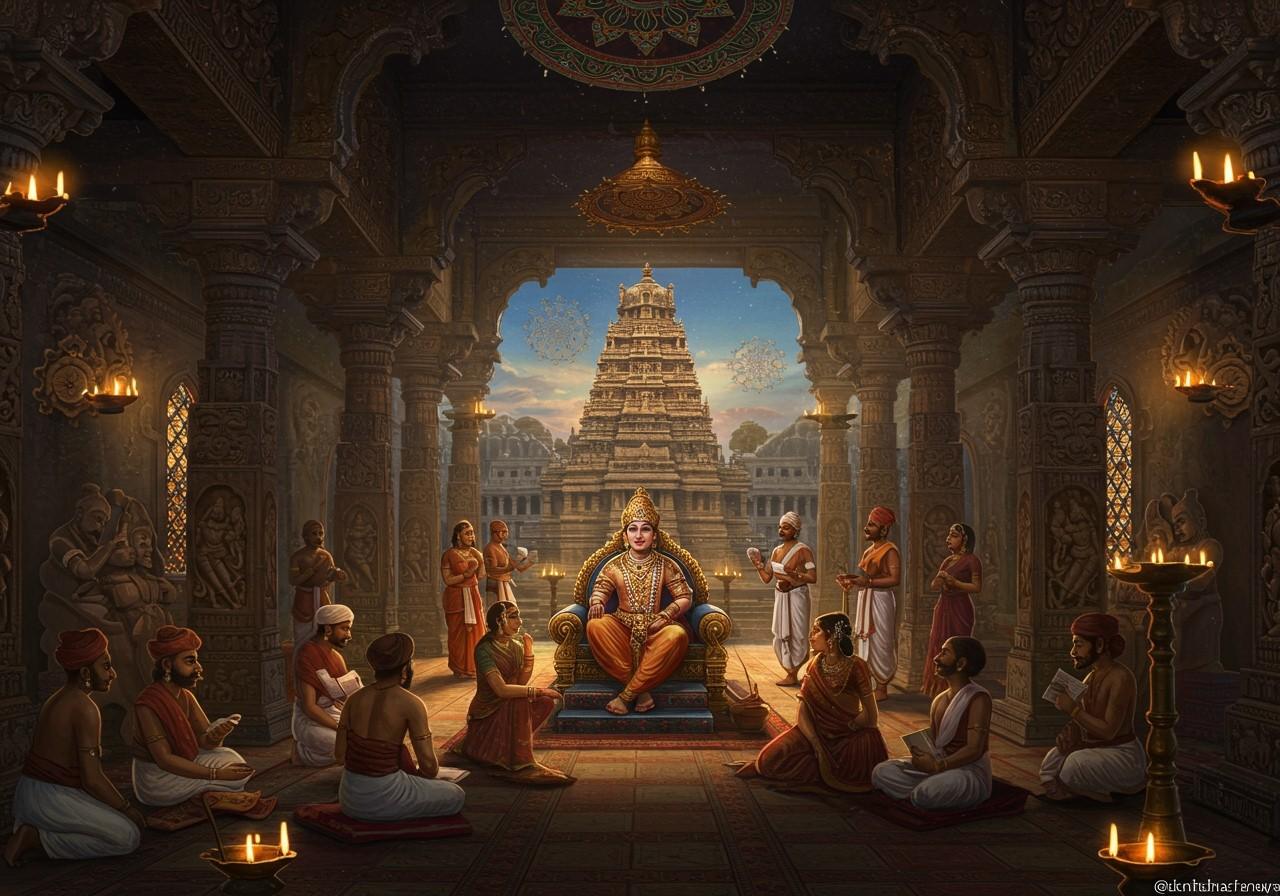
The Rashtrakuta dynasty, prominent in South India from the 6th to the 10th centuries, significantly shaped the Deccan’s architectural and artistic landscape. Their reign fostered a cultural renaissance, leaving behind a legacy of magnificent sculptures, vibrant paintings, and a golden age of Kannada literature. Art historian Adam Hardy identifies three distinct architectural schools within their realm: Ellora, the Badami-Aihole-Pattadakal region, and Sirval near Gulbarga. This flourishing of artistic expression under Rashtrakuta patronage underscores the dynasty’s vital role in shaping India’s cultural heritage.
Rashtrakuta Sculptures: Masterpieces Carved in Stone
The Rashtrakutas were masters of sculpture, with their most celebrated works found at the Ellora Caves, a UNESCO World Heritage Site. The iconic Kailasa Temple, carved from a single monolithic rock under Krishna I’s rule, exemplifies their architectural ingenuity. This temple’s intricate carvings depict scenes from Hindu mythology, showcasing a remarkable level of detail and dynamism. The sculptures reflect the era’s emphasis on realism and movement, influencing subsequent artistic styles across India.
Rashtrakuta artists pioneered innovative techniques and employed diverse materials for large-scale projects. Royal patronage played a vital role in fostering these artistic endeavors, enhancing the empire’s prestige and reflecting the socio-political context of the time. The sculptures often carried deep religious significance, serving as powerful expressions of devotion and belief.
Explore exquisite stone sculptures at poojn.in
A Golden Age for Kannada Literature
The Rashtrakuta era marked a golden age for Kannada literature. Royal patronage nurtured a vibrant literary scene, enabling scholars and poets to flourish. Adikavi Pampa’s epic, Vikramarjuna Vijaya, stands as a testament to this period’s literary achievements, exploring themes of devotion, heroism, and moral philosophy. Other prominent poets like Ponna and Ranna further enriched Kannada literature with their contributions of epic narratives and lyrical poetry.
The Rashtrakutas’ support elevated Kannada to a prominent literary language. The influence of Jainism, prevalent among the Rashtrakuta kings, further contributed to this literary blossoming. Kannada became a versatile medium for both religious and secular expression, showcasing the language’s richness and adaptability.
Rashtrakuta Paintings: Glimpses into a Vibrant Past
Painting flourished under Rashtrakuta rule, particularly mural art within cave temples like Ellora. Techniques like fresco and tempera were employed to depict religious narratives, scenes of courtly life, and mythological stories. These artworks offer valuable insights into the cultural and religious environment of the time, revealing cross-cultural influences and artistic exchanges.
Elements of color, composition, and symbolism played crucial roles in Rashtrakuta paintings, contributing significantly to the development of Indian art. Preserving these ancient masterpieces presents ongoing challenges, but conservation efforts continue to protect these valuable windows into the past. The influence of Rashtrakuta painting on later Indian art forms is undeniable.
Poojn.in: Supporting the Reverence for Art and Literature
Poojn.in offers a wide selection of items for worshipping Goddess Saraswati, the deity of knowledge, music, arts, wisdom, and learning. We provide authentic puja items to support traditional worship practices related to artistic and academic pursuits.
- Idols and Thalis: We offer pure brass idols of Goddess Saraswati, beautifully depicting her with the veena and sacred texts. We also provide special puja thalis designed specifically for Saraswati puja, with designated spaces for offerings.
Find authentic brass idols and puja items at poojn.in. - Sacred Items for Literature and Study: For students and literature enthusiasts, we offer copper water pots, pure cotton wicks for lamps, sandalwood incense sticks, fresh flower garlands, pure ghee, and specialized puja sets for book worship. Learn more about traditional puja practices on our blog.
- Items for Musical Instrument Worship: Musicians can find specific items for instrument puja, including brass oil lamps, red cloth for covering instruments, and specialized thalis. Browse our collection of puja items for musicians at poojn.in.
Visit poojn.in to explore our complete collection and learn more.
The Enduring Legacy of the Rashtrakutas
The Rashtrakuta dynasty’s dedication to art and literature continues to inspire. Their sculptures, literary works, and paintings represent a remarkable fusion of faith, creativity, and royal vision. Through these artistic mediums, the Rashtrakutas have left an enduring mark on Indian history and culture. Their legacy serves as a testament to the power of patronage in fostering artistic expression and cultural growth.
Exploring Rashtrakuta Contributions: Frequently Asked Questions
How did the Rashtrakutas support art and literature? The Rashtrakutas were renowned patrons, providing resources and encouragement to artists and writers. This support fueled the creation of exquisite sculptures, a flourishing of Kannada literature, and vibrant paintings.
What are some famous Rashtrakuta sculptures? The Ellora Caves house the most celebrated Rashtrakuta sculptures, including the magnificent Kailasa Temple, a testament to their architectural and artistic prowess.
Why is Kannada literature significant during Rashtrakuta rule? Royal patronage led to a golden age for Kannada literature, with renowned poets like Adikavi Pampa, Ponna, and Ranna creating enduring masterpieces.
What types of paintings were created? Mural paintings in cave temples like Ellora flourished, depicting religious narratives, courtly life, and mythological scenes using techniques like fresco and tempera.
Did the Rashtrakutas influence art beyond their kingdom? Yes, their patronage fostered cultural exchange, disseminating their artistic styles and literary works to neighboring regions, enriching India’s cultural landscape.
Discover more about Indian temples and their rich history on the poojn.in blog.


